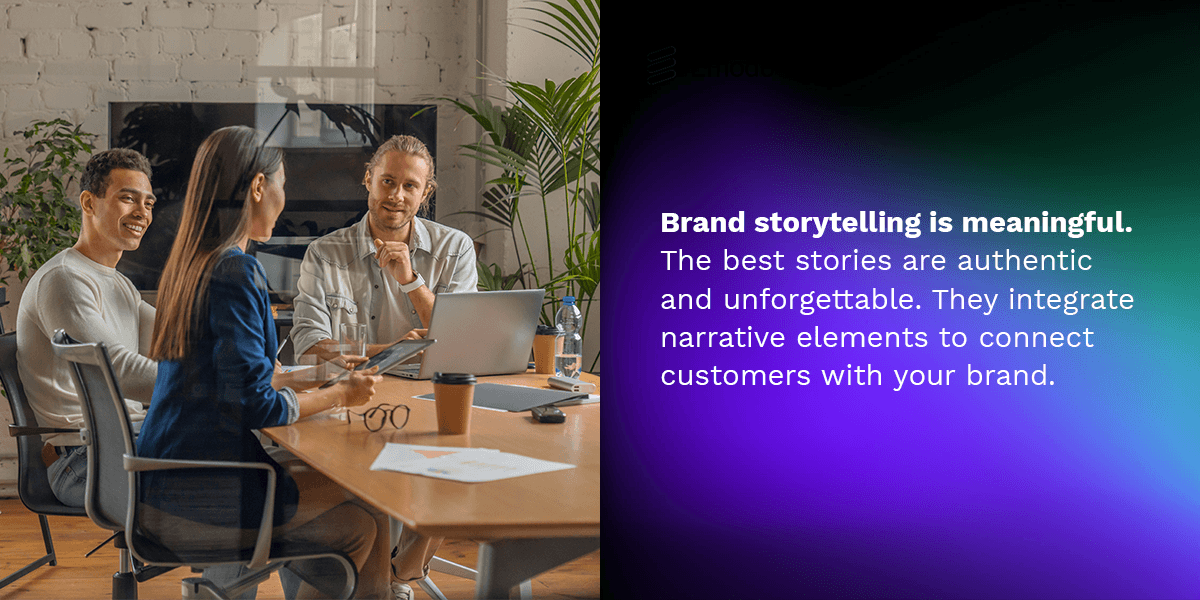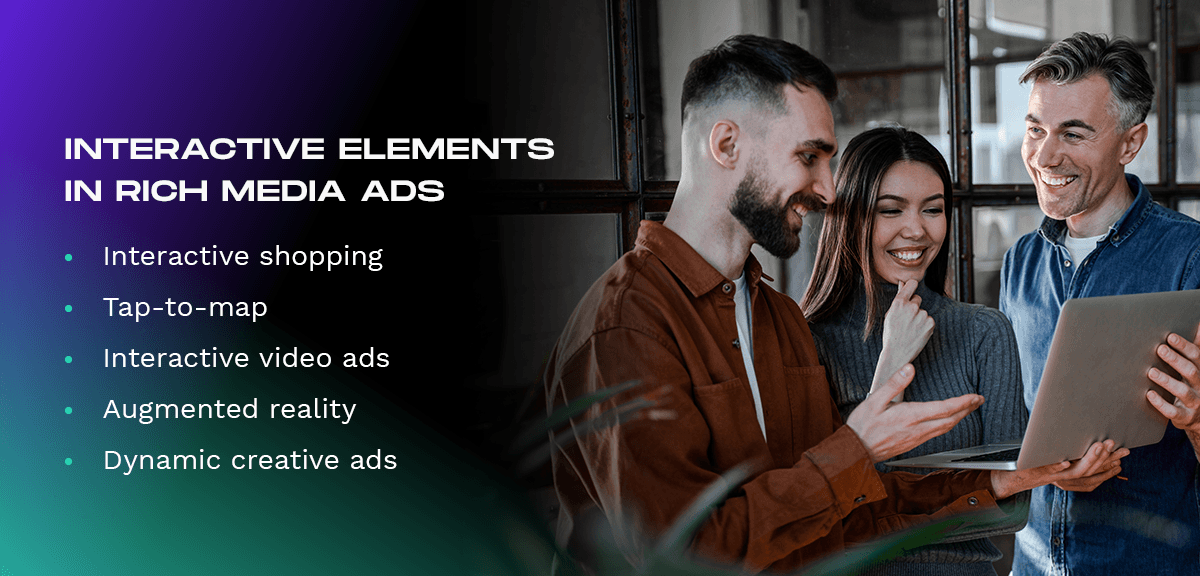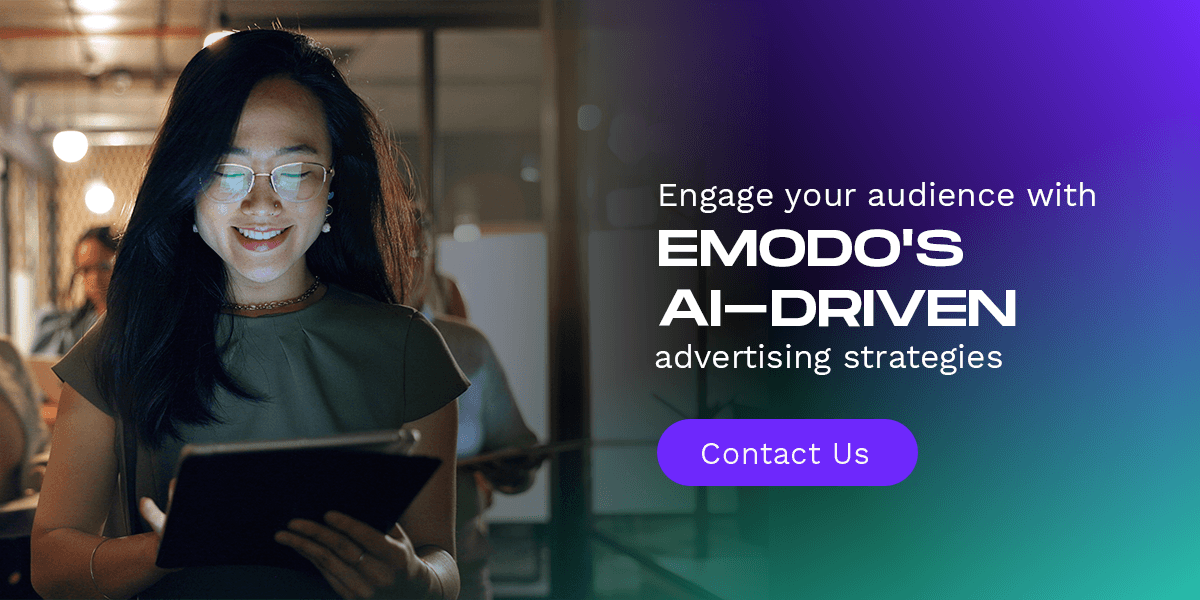A staggering 85% of U.S. adults go online every day. When encountering your brand, what they think or believe could mean the difference between a successful campaign and an expensive lesson. Every brand has a story. You can invite your audience to be part of yours with the power of rich media ads.
Enhancing brand messaging with rich media ads increases audience engagement, creating immersive advertising experiences and making memorable connections. It’s a way to build creative and dynamic experiences and make audiences part of your story. As an alternative to static display ads, rich media ticks all the boxes, inviting audiences to interact with your brand from the first encounter.
Rich media ads and brand perception
A rich media ad blends advanced digital features like audio, video, animations, text and other elements for maximum impact. These ads are dynamic and built to hold the user’s attention. They can mold to the user’s on-screen moments, encouraging them to interact and delivering immersive and personalized experiences.
An example of rich media includes augmented reality (AR) technology to let users visualize furniture in their homes or try on different makeup and nail products.
You can use rich media ads on several different platforms. The most common are websites, mobile apps and social media. Websites are a popular choice due to their large audience and high reach. Companies tend to use rich media ads to attract users’ attention in a crowded space and convey more information than a typical display ad. Interactive banner ads lead to 60.4% of participants exhibiting brand recognition and the highest memory of product characteristics.
What is brand storytelling?
Brand storytelling is a cohesive narrative that weaves together every aspect of your brand — the facts, the values and the emotions. In a crowded, fast-paced society accustomed to instant gratification, humanizing your brand forges deep and meaningful connections. This link leads to a phenomenon called brand love — a long-term relationship between brands and consumers based on multiple interrelated elements rather than a lone, transient emotion.
People are 22 times more likely to remember something when it’s part of a story. They’re influenced by challenges, victories and similarities to others. Brand storytelling is meaningful. The best stories are authentic and unforgettable. They integrate narrative elements to connect customers with your brand, linking you through shared values and cutting through the noise to the heart of your business.

Rich media ads for brand storytelling
Rich media ads do more than empower advertisers to make an authentic impact. They encourage users to interact with your brand and become the hero of your story. The average human attention span is eight seconds. Offering something unique is a fundamental challenge for all advertisers. Rich media ads are the opening line of your story, encouraging readers to settle in and enjoy the journey.
The average person sees 4,000-10,000 ads a day. A poorly placed, one-dimensional ad at the wrong time can change consumer perceptions, causing frustration and negative feelings. Rich media ads stand out, appearing modern and professional. They’re creative, impactful and engaging, increasing click-through rate (CTR). They go deeper in real time, conveying maximum information in an easily digestible format, educating and informing consumers. In that crucial eight seconds, you can showcase your story, values and products in an eye-catching and authentic way.
Types of rich media ads
Rich media ad formats are varied and plentiful. As a brand, you can choose the formatting that makes sense and helps you stand out in the crowded advertising landscape. Some of the most popular types of rich media ads include:
- Rich media banner ads: Banner ads come in two principal types — in-banner and expanding. In-banner ads are stationary and have interactive features such as scroll options. They can also include video, audio and animations. As the name suggests, expanding ads enlarge when users take an action.
- Interstitial ads: These full-page ads cover the publisher’s interface and are common in mobile apps during transitional points in the user experience, like starting a new game.
- Lightbox ads: These interactive ads expand and immerse audiences in a blend of different media to capture attention. They often start on the sidebar of a page and grow wider when users interact with them.
Interactive elements in rich media ads

Rich media ads are a creative’s dream. All you need is some imagination to unlock endless possibilities. Depending on how you want to tell your story, you can integrate many types of interactive elements, including:
- Interactive shopping: See the real-time impact of your ads by enabling users to shop for your brand directly. Viewers tap on the product in the image or video, triggering an integrated screen that gives them more information about the product. Advanced versions allow users to make purchases without leaving the original app.
- Tap-to-map: Interactive tap-to-map is ideal for engaging users and bringing them to a physical location. These ads feature an actionable button that sends users directly to their phone’s native maps app.
- Interactive video ads: The number of digital video viewers worldwide is expected to reach almost 3.5 billion by the end of 2023. Video is one of the best ways to maximize your impact. Rich media video ads involve an interactive overlay on top of a video while it plays. If a viewer wants to learn more about your brand, they can touch a button to move to your website, social media platform or their native app store.
- Augmented reality: Almost 75% of consumers are more likely to pay attention to an ad that incorporates AR elements, and 70% would like to see more AR ads in the future. AR can transport users to new cities, allow them to explore new concepts and immerse them seamlessly into your brand story.
- Dynamic creative ads: Dynamic creative ads allow advertisers to customize ads for their audience. An incredible 91% of consumers say they’re more likely to buy from brands that serve them relevant ads. Advertisers and publishers can create this personalization, provided they get creative in the face of device ID deprecation and find new ways to gather audience insights.
The average person spends about 4.5 hours on their smartphone daily, making creative rich media an effective channel to communicate your story. The proof is in the numbers. Rich media ads outperform banner ads by 267%, creating connections through rich, personalized creative experiences.
The effectiveness of rich media is apparent in examples like Intel, which used 3D technology to give users a real-time experience with its new laptop, achieving 413,000 customer views.
Engaging audiences with rich media ads
Rich media ads demand attention. They often require users to interact with them to trigger video or audio elements, making them less invasive and more immersive. One of the many reasons they offer an excellent return on investment is that they provide an unparalleled user experience. Audiences pay attention without browser interruptions or being forced to leave a site.
Aside from the connection you build with your audience, rich media technology allows for more metrics and insights, from impressions and pre-interaction enticements to display times, views and full-screen video completions. The data you gather from your rich media campaign can inform your advertising strategy. You can refine what works and rethink what doesn’t.
Visual learners make up 65% of the population, and rich media ads present content in a way that helps them retain more information. Spreading your content through the various available mediums broadens your reach. Rich media engages users, letting them follow your story and connect with your topic. When the time comes to call them to action, they’re more likely to convert.
How to craft rich media ads and tell your story
No business has a story quite like yours. Rich media ads can help you tell it if you craft them correctly and deliver them to the right audience. The following tips can help you create impactful rich media ads that get to the heart of your story:
1. Dig deep
Brand storytelling is about building connections. Ask yourself what your business is about at its core and what is unique about what you offer. What do you stand for? What do you sound like? All these elements come together to create a cohesive message.
Getting to the core of your business requires some introspection. Gather information from prospects, customers and employees about their decision-making motivators when making choices about your brand. Look at what your competitors are doing and stay abreast of market trends. Take a clear stand on the problems you intend to solve, and be transparent about how you’ll do it.
2. Identify your audience
It’s easier to tell a story when you know who you’re talking to. The best rich media ads are personal, creating a relevant connection. Gather the necessary data and then use it to understand your target audience on a human level. What do they value? How are they engaging with your brand? What elements of your existing campaigns drive conversions? The answers to these questions can help you create meaningful interactions with your audience, forging stronger relationships.
3. Define your strategy
With a clear idea of who you are and who your audience is, consider your goals for this particular campaign. Having clearly defined goals and strategic objectives helps you select the best creative assets and type of rich media you use. Knowing your audience’s wants lets you create the best engagement strategy.
Use your previous campaigns to inform your current strategy. Try to identify trends in campaigns that performed well or fell short. Clarity on where you are can propel you forward into your next successful campaign.
4. Create your narrative
What story do you want to tell? How are you going to tell it? Think about how you can tell your story to solve consumer problems and evoke emotions. Be consistent in your messages and decide whether a standalone story or a series of narratives best suits your goals.
5. Choose your creative assets
A strong strategy and narrative come alive when you plan your creative assets. Your ad has three principal components — the copy, the call to action and the visuals, like animations, video, illustrations and static images. Consider the assets on your landing page. Moving from your rich media ad to the landing page should result in conversion, so ensure your story is cohesive and runs throughout every element of the customer journey.

6. Show, don’t tell
Rich media advertising is an opportunity to create consistent, personalized messages. Build your story one brick at a time. Instead of selling to consumers, show them who you are. Show them your values and your plans for the future. If you haven’t already, develop a clear vision statement that defines your brand’s core values and objectives for the future.
This vision will become a powerful tool as you progress in your brand storytelling journey. Refer to it when conceptualizing a new campaign to keep your message authentic and consistent.
7. Craft your message
How can you ensure your story resonates with your target audience? Keep your message authentic, concise and impactful. Consider what mediums could spark a connection — video, animation, quizzes and virtual tours are all possibilities. Remember, creating a genuine connection means your message must be human. Showing viewers your selection of products and services is one thing, but you want them to embrace your persona.
8. Make it interactive
You want users to interact with your ad and buy your story. There are no creative limits to how you can make your ad interactive. Will viewers be able to see your product in 3D, tap through a slide deck or be transported to your landing page when they click on the ad? How audiences interact with your ad should enhance your narrative and support your strategic goals.
9. Optimize
One of the most significant benefits of rich media ads is their complexity. The files are much larger than traditional display and banner ads. Ads that are too big or detailed for a specific platform can impede performance, leading to frustrated viewers. Stick to your platform’s file size limit and test your ad on different channels. Make minor tweaks to ensure a complete omnichannel experience.
10. Track and measure
When you’re happy your ads tell your story and connect your audience to your brand, you can run them. Once you start, monitor their performance and look for improvement opportunities. Compare your key performance indicators (KPIs) against your new campaign and see what offers the best return.
11. Find a creative services partner
Like all advertising, the world of rich media ads can be challenging, especially after the death of third-party cookies. Input from an experienced creative services provider like Emodo can change your advertising game. We can help you develop engaging rich media and establish deep, impactful connections with your target audiences.
Our contextual audiences technology builds detailed profiles independent of sensitive user data, allowing you to track audiences without cookies. The Emodo ad technology suite offers abundant interactive opportunities to help you tell your story and elevate your next campaign.
Engage your audience with Emodo’s AI-driven advertising strategies
In the digital world, the advertising space is more crowded than ever. Getting on the rich media trend now is critical to staying ahead of the competition and engaging your audience. We’re here to make that happen.
Emodo rich media ads are purpose-built to break through the clutter. Our engaging options influence buyer decisions, generating a 4.9% lift in brand awareness. Together, we’ll make creative you can feel. Contact us today to make the unimaginable possible.
MORE LIKE THIS



